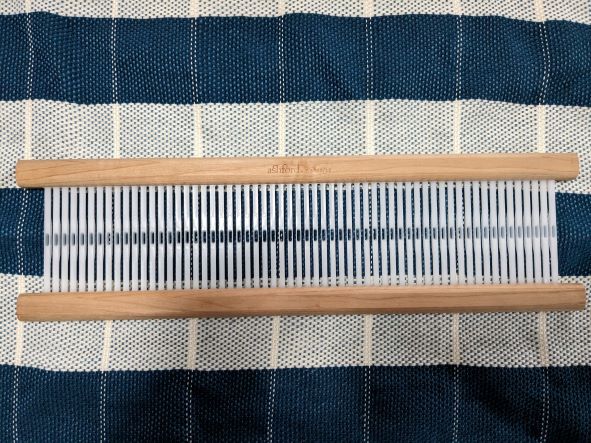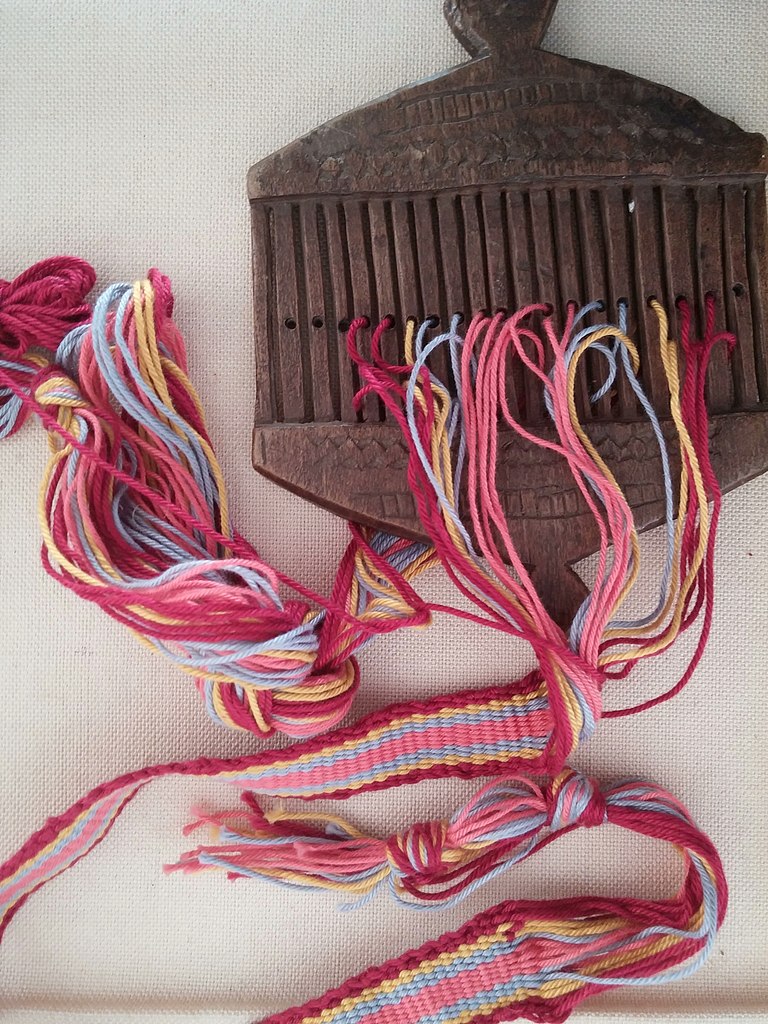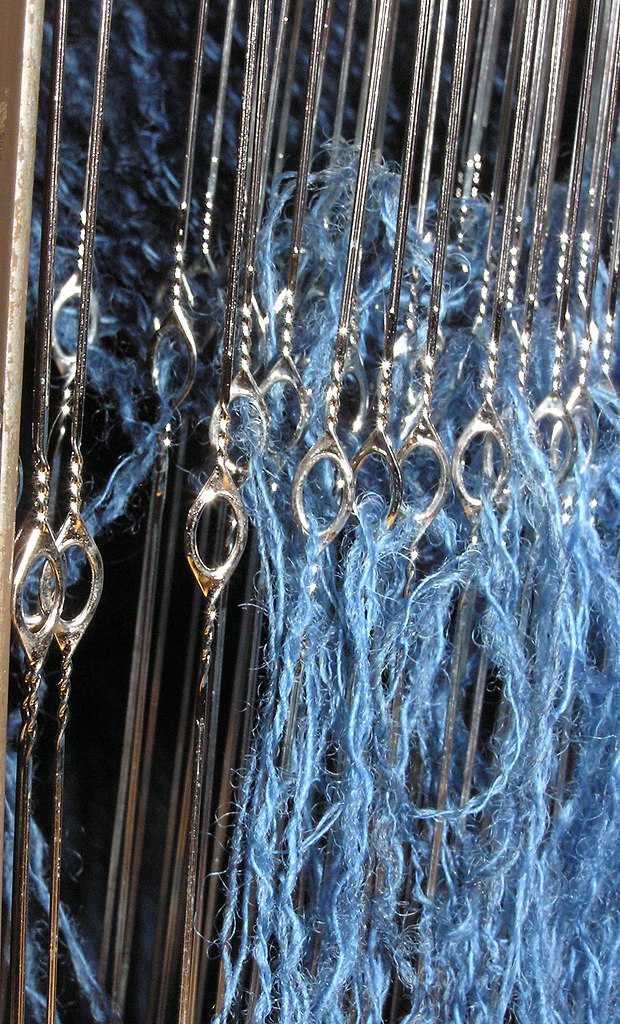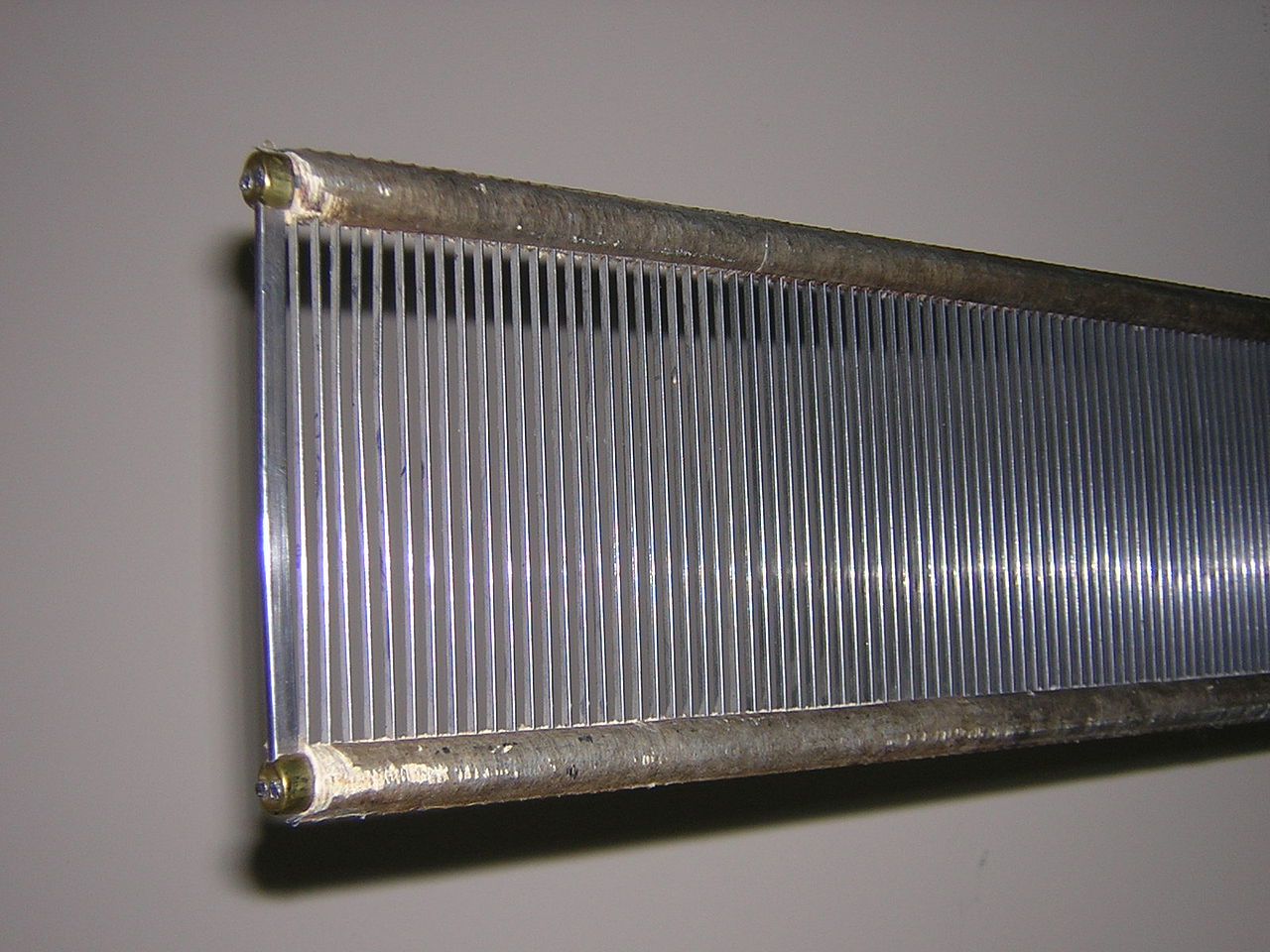Heddle vs Reed vs Rigid Heddle
terminologyReed?
Heddle?
Rigid Heddle?
Are these the same thing? Or are they different?
Yes, and no.
On some styles of looms, and especially shaft looms, reeds and heddles are entirely different parts of the loom. But on a rigid heddle loom, the rigid heddle performs the roles of both of these parts, and so, sometimes it is called simply the heddle or the reed, or, more rarely, something like 'rigid heddle reed'. This can sometimes lead to confusion when rigid heddle weavers and shaft loom weavers interact!
A rigid heddle is a solid piece with many holes and slots, that is moved up or down to produce different sheds for weaving; the yarns running through the slots don’t move, while the yarns threaded through the holes move up or down with the rigid heddle. Modern rigid heddles are most often made of plastic, often with a wood frame, and sometimes laser cut wood, but they can also be made of metal or carved from wood or bone. On a rigid heddle loom, the rigid heddle is typically also used to beat and space the warp, like a reed, and they can also be used this way with backstrap style weaving to make a wider, balanced fabric.

Rigid heddles can also be used for weaving narrow bands. In this context, they are only used to control the shed, and not beat or space the warp - considerable draw in is expected. In this context, it would be called a rigid heddle or heddle, and not a reed. Some band weaving rigid heddles have features like double holes or varying lengths of slots to facilitate some kinds of pattern weaving. Rigid heddles for rigid heddle looms are typically described with a DPI, or threads per 10cm in metric, while those for band weaving often focus more on the number of holes/slots.

CC BY-SA 4.0, Link
A heddle is most generally a thing that controls the movement of a thread for weaving that isn't a solid stick. A stick can make 1 shed, but you need heddles to make more than one shed. Heddles can be made of loops of string, commonly used with backstrap looms, tapestry weaving, and when using a heddle rod to add additional patterning on a rigid heddle loom; on a modern shaft loom, they are typically made of metal or a special synthetic cord with holes in it called texsolv. In most applications, 1 heddle moves 1 thread, though can sometimes be threaded with more than one for structures like basketweave; many heddles are grouped together on a heddle rod or a shaft depending on loom type. In the rigid heddle context, you usually describe things in holes and slots and the term heddle refers to the whole rigid heddle, not any one hole or slot.

Public Domain
A reed in weaving is a piece most often on floor or table looms, that is used to spread the warp evenly and beat the weft into place, but does not control the shed. You might also see this referred to as ‘the beater’ though I think this tends to refer to the whole assembly that includes the reed. Modern reeds are typically constructed of regularly spaced steel wire; traditionally they were constructed of thin reeds, cane, or bamboo. Reeds are also described with a DPI or threads per 10cm in metric. Since reeds are used only to space and beat, and don't control the shed, the number of threads in each dent doesn't impact the pattern of the yarns, and shaft loom weavers often use a reed substitution chart to adjust the sett; but this does not apply to a rigid heddle which does control the shed.

Public Domain
All three of these terms are regularly used to refer to the same piece on a rigid heddle loom, including by manufacturers, retailers, and books and magazines, but I find the term 'rigid heddle' least ambiguous if a bit wordy. I hope this helps clear up confusion around these terms!
Check out Not So Rigid Designer, the online weaving software for rigid heddle loom weavers!
